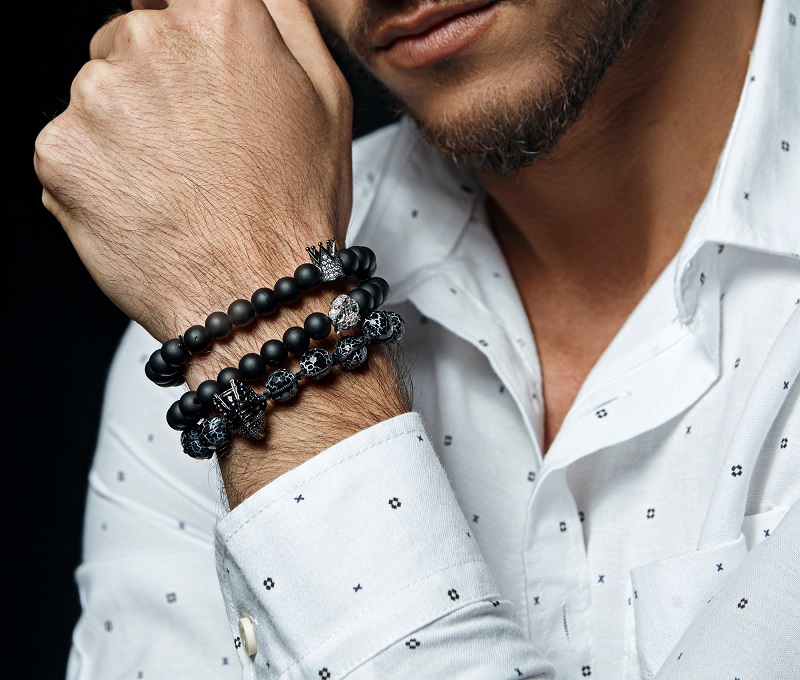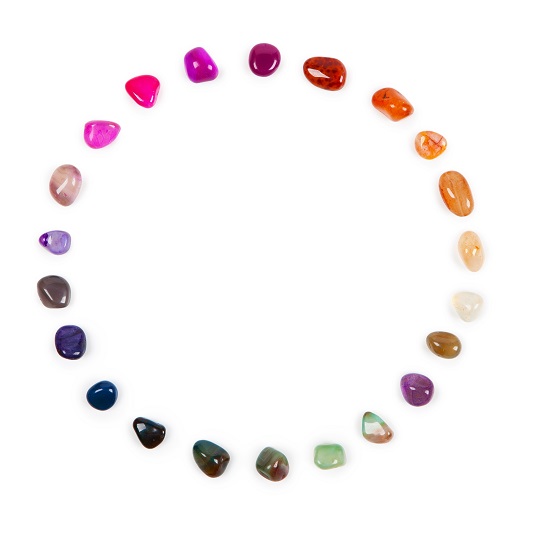Moonstone: Gemstone of the Week

Gemstone of the Week – Rubellite
1st December 2017
Topaz: Gemstone of the Week
14th December 2017Directly associated with the Mother Goddess, Moonstone is a popular stone amongst women of all ages. Boasting an iridescent appearance and vibrant shine, the valuable gemstone is thought to represent the moon; the reflective surface is said to remind one that as the Moon phases through the circle of life, so do we. Ancient cultures often referred to Moonstone as Water Opal, Wolf’s Eye, and Fish Eye, cherishing the gemstone for it’s strong connections to the moon and the energies of life. In India, Moonstone is still cherished to this day. Top-grade specimens are only permitted to be displayed on a yellow cloth. Some people in this culture believe that the event of a full moon can give the gemstone magical powers; after this occurrence, the gem is thought to bless the beholder with a lifetime of good health and happiness. In this article, we explore the popular gemstone in more detail.
How to Identify Moonstone
There are a number of different ways to identify Moonstone. As one of the only gems with the presence of adularescence, this optical phenomenon is one of the simplest identifiers for the untrained eye. For those that have the skills and resources to look deeper into the stone, Moonstone can be easily distin-guished by its chemical composition. Most of the gemstones that are similar in appearance to Moonstone are forms of plagioclase feldspar, whereas the stone itself can be classed as potassium feldspar. Another great way for professionals to identify the stone is by testing for hardness. Moonstone measures at around a 6 on the Mohs scale. Similar stones, such as opal and ammolite are significantly softer, making it fairly easy to set the gemstone apart. The depth of colour of top-quality Moonstone is often classed as ‘three-dimensional’. Currently, there are no other gemstones that can replicate this appearance.
Different Colours and Types of Moonstone
Moonstone can be found in a variety of different types and colours. The most common colours are white, light blue, colourless, and pale shades of peach. The most valuable specimens are typically iridescent and colourless; the value is thought to derive from their incredible rarity. Other expensive varieties include Cat’s eye Moonstones and Star Moonstones. Below, we explore a few of the most popular varieties in more detail.
Rainbow Moonstone
Rainbow Moonstones are typically iridescent and of fine quality. The iridescent effect is often referred to as the Schiller phenomenon, which makes the stone appear multi-coloured. Specimens of Rainbow Moonstone are rare and valuable, especially those that are colourless and exhibit a powerful lustre. These gems were historically mined from Burma, but in recent years this source has run dry; this is just one of the factors that contribute to the rarity of Rainbow Moonstone.
Blue Rainbow Moonstone
First discovered in Southern India, Blue Rainbow Moonstone has been popular within the jewellery in-dustry for the past 15 years. Factually speaking, the gem is not actually a true moonstone; instead, it is a form of Labradorite. However, many industry professionals place the specimen in the moonstone catego-ry. Blue Rainbow Moonstone often boasts the iridescent effect of natural Rainbow Moonstone, but due to its chemical composition, the stone holds far less value.
Blue Norwegian Moonstone
Blue Norwegian Moonstone, also known as Black Moonstone, is made from a Norwegian mineral called Larvikite. While most specimens of this stone are dark blue in appearance, some varieties may be almost black – hence the alternative name of Black Moonstone.
Where is Moonstone Found?
Moonstone can be found in various locations around the world. Typically, top-grade specimens are mined from Sri Lanka and India, although deposits are also found in Australia, Brazil, Germany, India, Myanmar, Madagascar, Mexico, Norway, Switzerland, Tanzania, and the United States. Sri Lanka is famous for pro-ducing beautiful blue coloured stones. As Blue Moonstone is becoming increasingly rare, good-quality gemstones often carry a hefty price tag. Most of the Rainbow Moonstone on the market today comes from India, but again, deposits are becoming rare.
Healing Properties of Moonstone
Moonstone is directly associated with the Mother Goddess. Because of this, Moonstones are thought to aid a wide variety of female issues. Most notably, good-quality Moonstone is said to benefit the repro-ductive system, conception, pregnancy, breastfeeding, and even childbirth. Additionally, the stone is thought to ease symptoms of the menopause and alleviate degenerative issues associated with the hair, skin, and eyes. Both women and men can use Moonstone to aid the digestive system, using the gem to ease painful symptoms associated with Crohn’s Disease, Inflammatory Bowel Disease, and Irritable Bowel Syndrome.
The feminine stone is also said to improve psychic awareness and intuitive sensitivity. Moonstone can also be used in meditation, helping the beholder to process personal emotions and calm the body and mind. When used as an elixir, Moonstone can help to treat insomnia. Suffers should place a small stone under their pillow to encourage a deep, peaceful sleep. When used in conjunction with Amethyst, the stone can also help to prevent sleepwalking.
In Summary
Top-quality Moonstone is a rare and valuable precious stone. Today, blue and colourless varieties are only found in Sri Lanka, with notable deposits becoming rarer by the day. Loved for its iridescent appearance, many varieties of Moonstone are used in designer jewellery. Whether you’re looking for a beautiful new addition to your jewellery collection or you’re hoping to use the stone for its benefits within crystal heal-ing, purchase a good-quality piece of Moonstone to reap the benefits.




